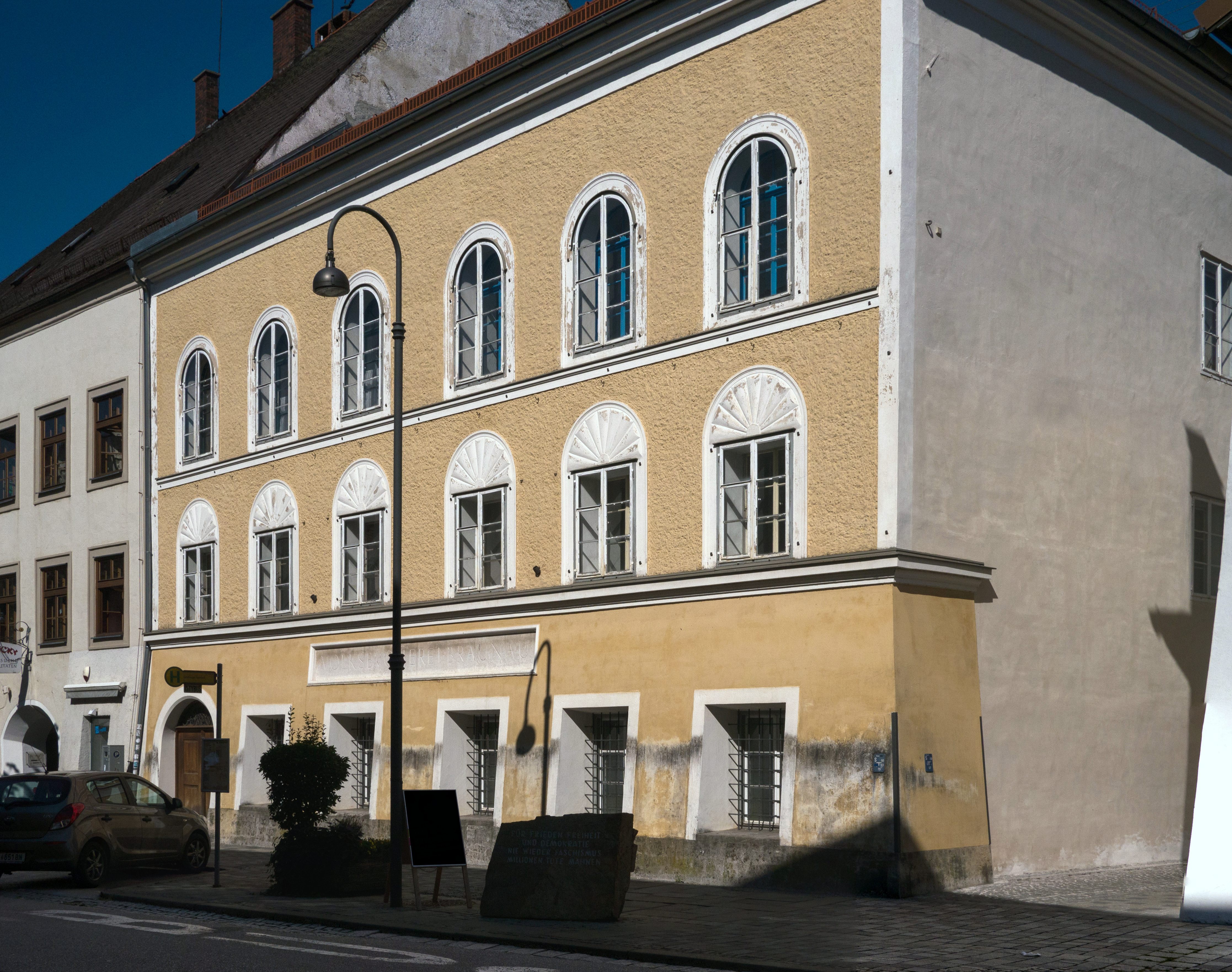The Terrible Problem of Hitler’s Earliest Home
The government’s efforts to dissociate the building from its most notorious resident has become a 5-year battle against its landlord.

Hitler’s birthplace: Salzburger Vorstadt 15 in Braunau am Inn, Austria. (Photo: Thomas Ledl/CC BY-SA-4.0)
It’s a modest building, on a quiet street. It is also the house where Adolf Hitler was born. What to do with such a place?
For years, the Austrian government dedicated it to uses purposefully at odds with the notorious dictator’s agenda of hate but, still, the stain could not be erased. Yesterday, the government of Austria announced that is taking major steps to ensure the house cannot continue as a pilgrimage site for neo-Nazis.
“We are currently examining the creation of a law, which would force a change of ownership and pass the property to the Republic of Austria,” interior ministry spokesman Karl-Heinz Grundböck explained to Agence France-Presse. The government turned to expropriation in a last-ditch attempt to resolve a five-year dispute with the building’s owner, during which the house has sat empty in downtown Braunau am Inn.
The house at Salzburger Vorstadt 15 operated as a pub and boarding house when Hitler was born in 1889. In 1912, the building was purchased by the family that owns the house today; the building was briefly owned by Hitler’s private secretary Martin Bormann, who Spiegel Online claims hoped to turn the building into a monument “on par with the birthplaces of Stalin and Mussolini” when he purchased it in 1938. Bormann’s plan never materialized (although his initials remain in the iron grillwork above the front door), and the building was seized during the Allied liberation of Austria, with ownership restored to the previous owners in 1952.
In 1972, to avoid the house becoming a pilgrimage site, the Austrian government began leasing the building from Gerlinde Pommer—a descendent of the 1912 buyers—with the lease stipulating that the building could only be used for “educational, social, or bureaucratic purposes,” according to a 2015 article in the New York Times. Beginning in 1976, the building housed a facility for disabled adults, Lebenshilfe Oberösterreich, which moved out of the building in 2011. The tenants were forced to relocate after Pommer refused to authorize renovations for accessibility. Since then, several new uses of the building have been proposed, each time igniting a fury of debate within the town.
In 2012, a small controversy erupted when mayor Johannes Waidbacher hinted in an interview with Austrian’s Der Standard that he supported converting the building into residential units. The New York Daily News canvassed locals regarding the idea, and the response was entirely unenthusiastic. As Erika Doedl put it, “[Living in the house] wouldn’t be pleasant for the tenants—once they moved in they would be asked about this all the time.”
As reported by Spiegel Online, Mayor Waidbacher also expressed disdain towards using the house as some form of Holocaust memorial or museum, “One should also ask the question in general as to whether a further Holocaust memorial makes sense when there are already so many in the area.” Unsurprisingly, this comment triggered backlash from local politicians and residents, and Waidbacher later walked back the statement, saying he was open to “all possible uses” of the building.
Russian MP Frantz Klintsevich apparently took Waidbacher’s openness to heart, floating a proposal to purchase and destroy the house “demonstratively” a few months later, according to a report in the International Business Times. The plan didn’t go far: the house is located in Braunau’s historic downtown district, and is therefore marked for preservation.
After the apartment plan was scuttled, a group of local historians led by Andreas Maislinger proposed converting the building into a “House of Responsibility” museum and remembrance project, in the hopes that making the house a “clear and just symbol against Nazism” would eliminate its appeal to current-day admirers of the fascist leader. Simultaneously, political leaders and others floated the idea of turning the building over to a local aid organization to provide language classes and adult education for immigrants and refugees. Unfortunately, every suggested purpose has been halted by Pommer’s refusal to allow any renovations, as historian Florian Kotanko explained to the BBC:
“She does not accept any proposal of using the house for offices or other purposes. She does not allow any changing of the house, so you can’t rebuild any rooms, you can’t build modern bathrooms or put in a lift. It is difficult.”

A memorial carved from stone quarried at Auschwitz has been placed on the public street in front of the home. (Photo: Anton-kurt/CC BY-SA-3.0)
By early 2015, the Austrian government was officially fed up. In January, Mr. Grundböck told the New York Times that the interior ministry had made an offer to purchase the house outright from Pommer, indicating that the government would investigate options for dispossessing Pommer if she refused. Yesterday’s announcement shows that the government is ready to make good on their threat, although they promise to compensate Pommer fairly in the event that the house is expropriated.
Ironically, the struggle to address the house’s place in history began with an attempt to destroy it. According to the New York Times, in the days after Braunau am Inn surrendered to Allied forces in May 1945, a group of German soldiers attempted to raze the home where Hitler was born rather than allow it to be seized. American soldiers prevented the destruction, ensuring the house would remain a point of contention for the town in decades to come.








Follow us on Twitter to get the latest on the world's hidden wonders.
Like us on Facebook to get the latest on the world's hidden wonders.
Follow us on Twitter Like us on Facebook